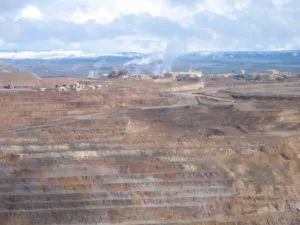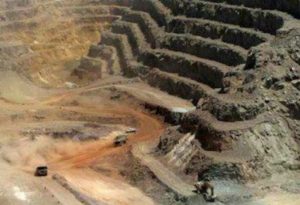Every stage of the mining process, including the ore extraction, generation of solid waste, and ore refining and processing, creates air pollution that has environmental and public health impacts.
According to the U.S. Toxics Release Inventory, the metal mining industry in the United States contributed the following, in 2010:
* 92% of industrial mercury emissions
* 94% of industrial arsenic emissions
* 73% of known Carcinogenic waste
Globally, metal mining is one of the biggest sources of air pollution.
- A UNEP study finds that artisinal gold mining to be the leading source of human-caused mercury emissions.
- Smelting of metals, including gold, is a primary source of arsenic emissions and other toxins globally
To extract metal, ore is placed in a smelter, a type of furnace. The ore is subjected to very high temperatures in order to melt the metal and release it from other materials in the ore. While smelting technology has improved considerably over the past half century, they still release a great deal of toxins, in particular:
Smelters also release tons of greenhouse gases into the atmosphere. Aluminum smelters, for example, release two tons of carbon dioxide and 1.4 kilos of perfluorocarbons (PFCs) for every ton of aluminum produced. PFCs have up to 9,200 times the heat-trapping potential of carbon and will linger in the atmosphere for tens of thousands of years.
These toxins are harmful to workers and local communities. Exposure to mercury, for example, can result in illnesses ranging from impaired vision and muscle weakness to permanent kidney and nerve damage, depending on the level of exposure. Arsenic is a carcinogen. And high zinc exposure can lead to conditions such as anemia and metal fume fever. See below for more information on the environmental and health impacts of toxins generated and released during gold mining.
For More Information
- Information on Acid Rain
- Information on Lead
- Center for Disease Control and Prevention
- EPA Mercury from Gold Mining Regulation
- United National Environment Programme Mercury
- Earthworks Ruined Lands, Poisoned Waters. A section from Dirty Metals: Mining, Communities and the Environment
- Earthworks Mercury Emissions From Gold Mine
- Information on Sulfur Dioxide Emissions
- Information on Nitrogen Oxides Emissions
- Information on Sulfur Dioxide
- Information on Mercury
- Information on Arsenic
- Information on Carcinogens
- Information on Zinc
- Information on Cadmium
- The U.S. Toxics Release Inventory: Find toxic release reports near your home
- Information on Aluminum Production Waste
- Question and Answer about the future of La Oroya, Peru, one of the most polluted places on earth
- Nevada Department of the Environment Nevada Mercury Control Program (NMCP)
- EPA Factsheet Final Rule to Reduce Mercury Emissions from Gold Mine Ore Processing and the Production Sources
- United Nations Environment Programme Reducing Risk from Mercury
- United Nations Environment Programme Global Mercury Partnership
- Blacksmith Institute Artisanal Gold Mining: A Dangerous Pollution Problem




